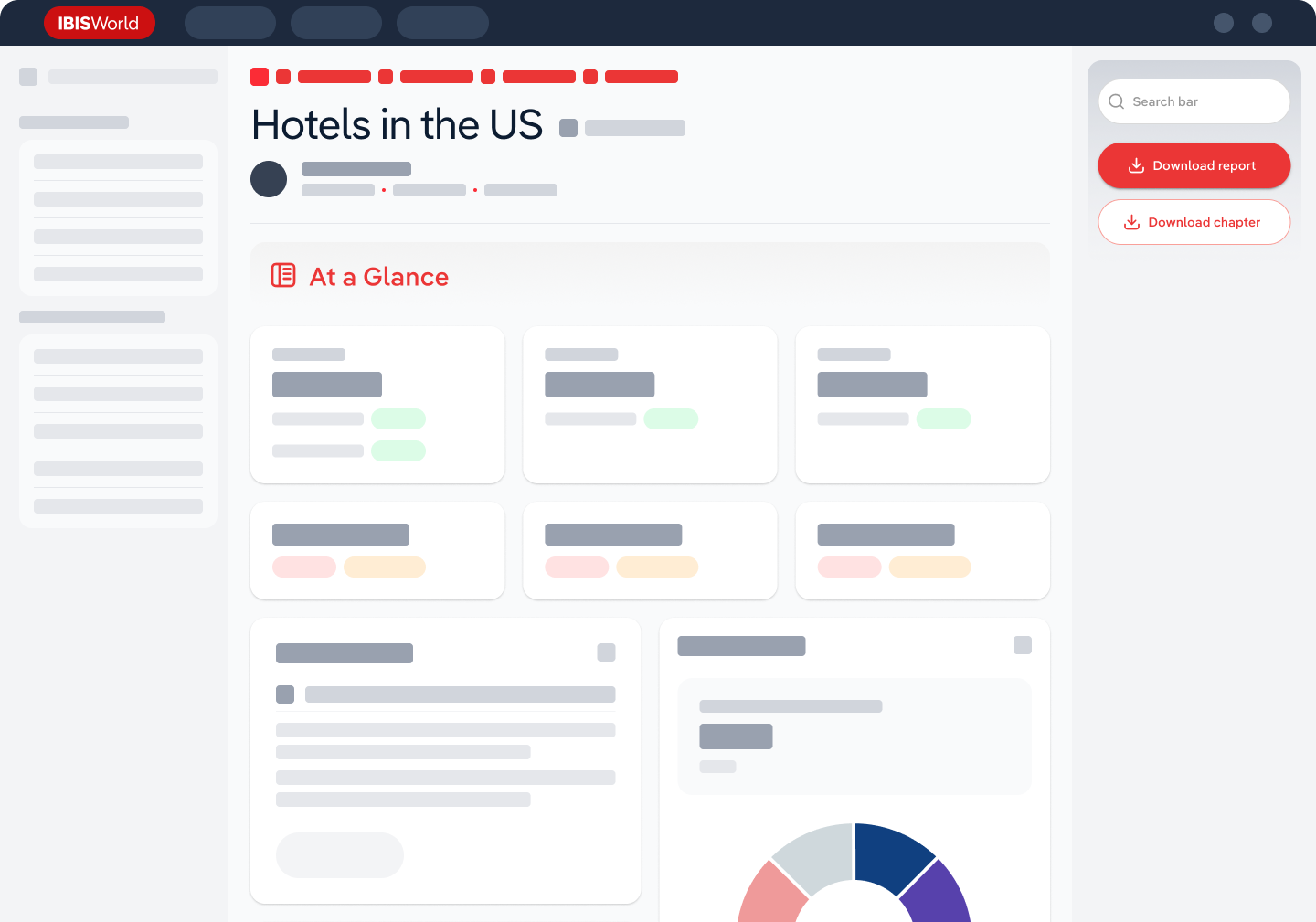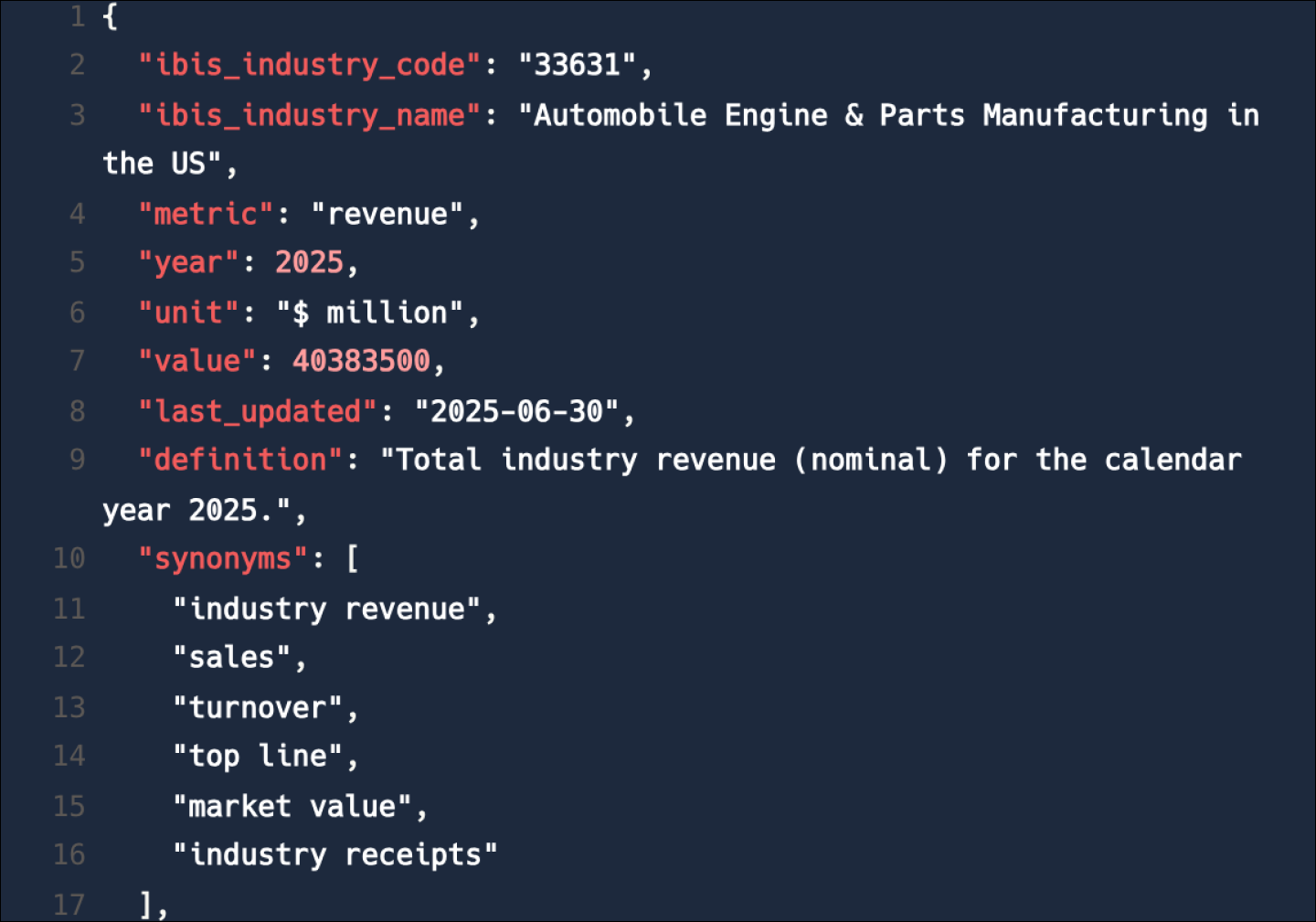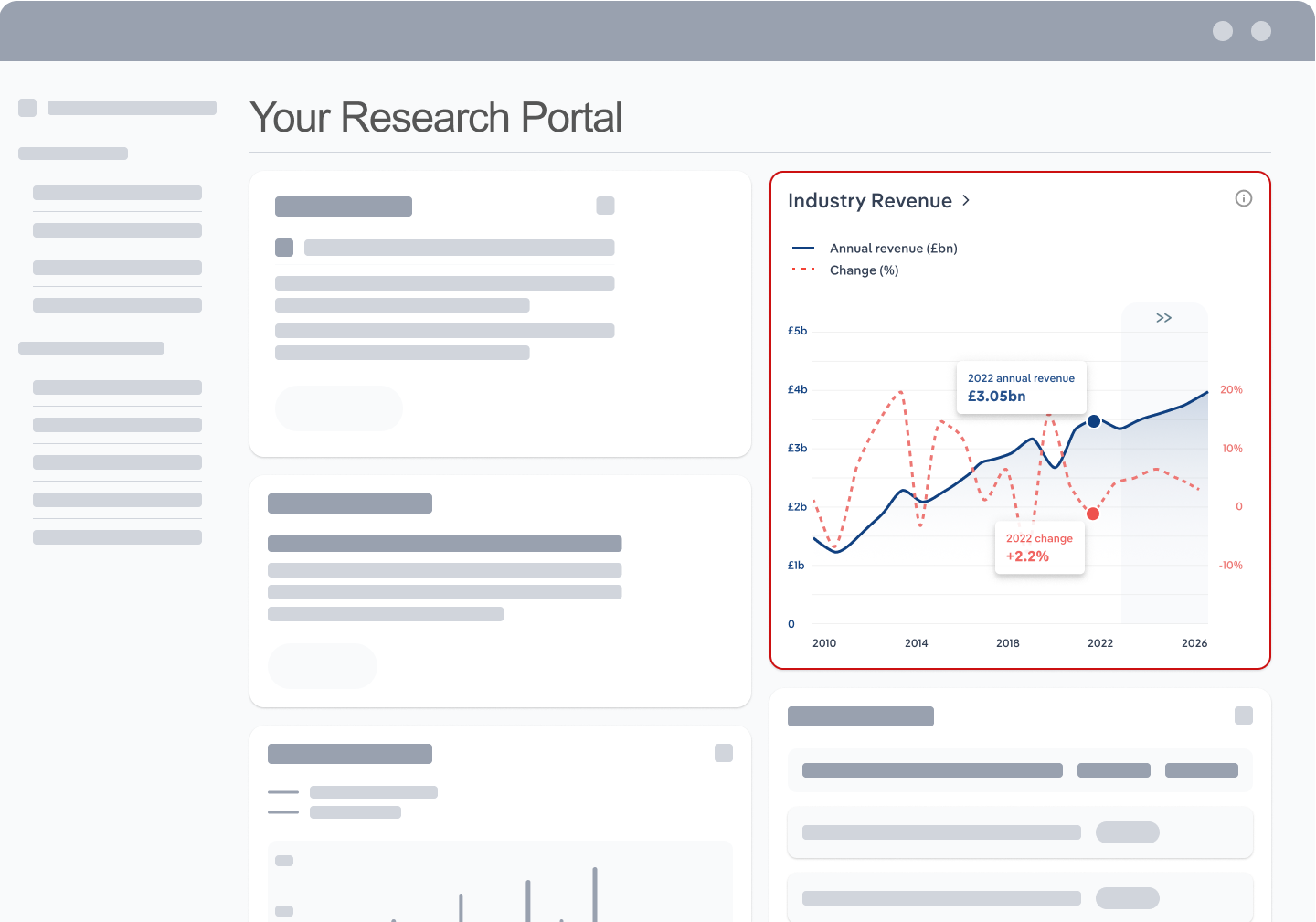Industry Statistics and Trends
Market size and recent performance (2015-2030)
Industry revenue has grown at a CAGR of 4.3 % over the past five years, to reach an estimated $13.9bn in 2025.
Trends and Insights
A surge in severe weather events boosts demand for roof repairs
- According to Catastrophe Indices and Quantification Inc. (CatIQ), insured damage caused by severe weather events surpassed $8.0 billion in 2024 for the first time in Canadian history. The tally shattered the previous record of $6.0 billion set in 2016. While the most destructive weather event in 2024 was the August hailstorm in Calgary, Alberta, that caused $3.0 billion in insured losses in just over an hour, flooding continued to cause significant damage in nearly every region across the country.
- Additional trends and insights available with purchase
Industry outlook (2025-2030)
Market size is projected to grow over the next five years.
Trends and Insights
Demand from residential renovations persists
- Residential renovation demand in Canada is positioned to remain robust for roofing contractors, supported by three key factors. First, housing market dynamics, including high home prices, will incentivize homeowners to renovate rather than relocate.
Biggest companies in the Roofing Contractors in Canada
| Company | Market Share (%)
2025 | Revenue
2025 | Profit
2025 | Profit Margin (%)
2025 |
|---|
There are no companies that hold a market share exceeding 5% in the Roofing Contractors in Canada industry.
Products & Services Segmentation
Industry revenue is measured across several distinct product and services lines, including Steep-slope roofs, Low-slope roofs and Single-ply roofs. Steep-slope roofs is the largest segment of the Roofing Contractors in Canada.
Trends and Insights
Steep-slope roofs are the most popular product
- Steep-slope roofs are an industry staple because of their durability and efficiency. They can shed water more efficiently and are better protected from direct UV exposure. Their deep concavity is also useful in maximizing a home's living space.
- More insights available in the full report
Table of Contents
About this industry
Industry definition
The Roofing Contractors industry in Canada installs roofing, siding, sheet metal and roof drainage systems, such as downspouts and gutters. Activities also include treating roofs (e.g. spraying, painting or coating), coppersmithing, tinsmithing, installing skylights, installing metal ceilings, flashing, ductwork and capping. Duties performed include new work, additions, alterations, maintenance and repairs.
What's included in this industry?
Products and services covered in the Roofing Contractors industry in Canada include Steep-slope roofs, Low-slope roofs and Single-ply roofs.Companies
Companies covered in the Roofing Contractors industry in Canada include .Purchase this report to view all major companies in this industry.
Related Terms
Related terms covered in the Roofing Contractors industry in Canada include shingle, siding and leadership in energy and environmental design.Industry Code
NAICS 238160 - Roofing Contractors in Canada
Performance
Get an indication of the industry's health through historical, current and forward-looking trends in the performance indicators that make or break businesses.
Analyst insights
Severe weather events drive demand for durable and climate-resistant roofing installations in Canada. The surge for premium and sustainable materials like metal roofing indic...
In this chapter (4)
- Current Performance
- Outlook
- Volatility
- Life Cycle
Key metrics
- Annual Revenue, Recent Growth, Forecast, Revenue Volatility
- Number of Employees, Recent Growth, Forecast, Employees per Business, Revenue per Employee
- Number of Businesses, Recent Growth, Forecast, Employees per Business, Revenue per Business
- Total Profit, Profit Margin, Profit per Business
Charts
- Revenue, including historical (2015-2024) and forecast (2025-2030)
- Employees, including historical (2015-2024) and forecast (2025-2030)
- Businesses, including historical (2015-2024) and forecast (2025-2030)
- Profit, including historical (2015-2025)
- Industry Volatility vs. Revenue Growth
- Industry Life Cycle
Detailed analysis
- Trends in supply, demand and current events that are driving current industry performance
- Expected trends, economic factors and ongoing events that drive the industry's outlook
- Key success factors for businesses to overcome volatility
- How contribution to GDP, industry saturation, innovation, consolidation, and technology and systems influence the industry's life cycle phase.
Products and Markets
Learn about an industry's products and services, markets and trends in international trade.
Analyst insight
Increased residential improvements and renovations, favoring weather-resistant and sustainable installations, are boosting business for roofing contractors. This presents a l...
In this chapter
- Products & Services
- Major Markets
Key metrics
- Largest market segment and value in 2025
- Product innovation level
Charts
- Products & services segmentation in 2025
- Major market segmentation in 2025
Detailed analysis
- Trends impacting the recent performance of the industry's various segments
- Innovations in the industry's product or service offering, specialization or delivery method
- Key factors that successful businesses consider in their offerings
- Buying segments and key trends influencing demand for industry products and services
Geographic Breakdown
Discover where business activity is most concentrated in an industry and the factors driving these trends to find opportunities and conduct regional benchmarking.
Analyst insights
Ontario's combination of a large population, diverse construction types, and severe weather boosts demand for roofing contractors. Stringent building codes and an emphasis on...
In this chapter (1)
- Business Locations
Charts
- Share of revenue, establishment, wages and employment in each province
- Share of population compared to establishments in each region in 2025
Tables
- Number and share of establishments in each province in 2025
- Number and share of revenue each province accounts for in 2025
- Number and share of wages each province accounts for in 2025
- Number and share of employees in each province in 2025
Detailed analysis
- Geographic spread of the industry across North America, and trends associated with changes in the business landscape
- Key success factors for businesses to use location to their advantage
Competitive Forces
Get data and insights on what's driving competition in an industry and the challenges industry operators and new entrants may face, with analysis built around Porter's Five Forces framework.
Analyst insights
Roofing contractors compete primarily on price. Consumers will choose a contractor that offers the best price for roofing work. Other factors, such as experience and location...
In this chapter (4)
- Concentration
- Barriers to Entry
- Substitutes
- Buyer & Supplier Analysis
Key metrics
- Industry concentration level
- Industry competition level and trend
- Barriers to entry level and trend
- Substitutes level and trend
- Buyer power level and trend
- Supplier power level and trend
Charts
- Market share concentration among the top 4 suppliers from 2020-2025
- Supply chain including upstream supplying industries and downstream buying industries, flow chart
Detailed analysis
- Factors impacting the industry’s level of concentration, such as business distribution, new entrants, or merger and acquisition activity.
- Key success factors for businesses to manage the competitive environment of the industry.
- Challenges that potential industry entrants face such as legal, start-up costs, differentiation, labor/capital intensity and capital expenses.
- Key success factors for potential entrants to overcome barriers to entry.
- Competitive threats from potential substitutes for the industry’s own products and services.
- Key success factors for how successful businesses can compete with substitutes.
- Advantages that buyers have to keep favorable purchasing conditions.
- Advantages that suppliers have to maintain favorable selling conditions.
- Key success factors for how businesses can navigate buyer and supplier power.
Companies
There are no companies that hold a market share exceeding 5% in the Roofing Contractors in Canada industry.
Analyst insights
The Canadian roofing industry is highly localized, with contractors often serving specific communities. Smaller contractors foster relationships and trust within these local ...
External Environment
Understand the demographic, economic and regulatory factors that shape how businesses in an industry perform.
Analyst insights
Housing start numbers are directly proportional to roofing contractors' workloads. A downturn in housing starts could lower opportunities and revenue, while an upward trend m...
In this chapter
- External Drivers
- Regulation & Policy
- Assistance
Key metrics
- Regulation & policy level and trend
- Assistance level and trend
Charts
- Regulation & Policy historical data and forecast (2015-2030)
- Assistance historical data and forecast (2015-2030)
Detailed analysis
- Demographic and macroeconomic factors influencing the industry, including Regulation & Policy and Assistance
- Major types of regulations, regulatory bodies, industry standards or specific regulations impacting requirements for industry operators
- Key governmental and non-governmental groups or policies that may provide some relief for industry operators.
Financial Benchmarks
View average costs for industry operators and compare financial data against an industry's financial benchmarks over time.
Analyst insights
Rising service-driven revenue for roofing contractors is outpacing material cost growth. By focusing on high-margin services and operational efficiencies, contractors are eff...
In this chapter
- Cost Structure
- Financial Ratios
- Key Ratios
Key metrics
- Profit margin, and how it compares to the sector-wide margin
- Average wages, and how it compares to the sector-wide average wage
- Largest cost component as a percentage of revenue
- Industry average ratios for days' receivables, industry coverage and debt-to-net-worth ratio
Charts
- Average industry operating costs as a share of revenue, including purchases, wages, depreciation, utilities, rent, other costs and profit in 2025
- Average sector operating costs as a share of revenue, including purchases, wages, depreciation, utilities, rent, other costs and profit in 2025
- Investment vs. share of economy
Data tables
- Liquidity Ratios (2018-2023)
- Coverage Ratios (2018-2023)
- Leverage Ratios (2018-2023)
- Operating Ratios (2018-2023)
- Assets (2018-2023)
- Liabilities (2018-2023)
- Cash Flow & Debt Service Ratios (2015-2030)
- Revenue per Employee (2015-2030)
- Revenue per Enterprise (2015-2030)
- Employees per Establishment (2015-2030)
- Employees per Enterprise (2015-2030)
- Average Wage (2015-2030)
- Wages/Revenue (2015-2030)
- Establishments per Enterprise (2015-2030)
- IVA/Revenue (2015-2030)
- Imports/Demand (2015-2030)
- Exports/Revenue (2015-2030)
Detailed analysis
- Trends in the cost component for industry operators and their impact on industry costs and profitability
Key Statistics
Industry Data
Data Tables
Including values and annual change:
- Revenue (2015-2030)
- IVA (2015-2030)
- Establishments (2015-2030)
- Enterprises (2015-2030)
- Employment (2015-2030)
- Exports (2015-2030)
- Imports (2015-2030)
- Wages (2015-2030)
Top Questions Answered
Unlock comprehensive answers and precise data upon purchase. View purchase options.
What is the market size of the Roofing Contractors industry in Canada in 2025?
The market size of the Roofing Contractors industry in Canada is $13.9bn in 2025.
How many businesses are there in the Roofing Contractors industry in Canada in 2025?
There are 8,728 businesses in the Roofing Contractors industry in Canada, which has grown at a CAGR of 0.9 % between 2020 and 2025.
How may import tariffs affect the Roofing Contractors industry in Canada?
The Roofing Contractors industry in Canada is unlikely to be materially impacted by import tariffs with imports accounting for a low share of industry revenue.
How may export tariffs affect the Roofing Contractors industry in Canada?
The Roofing Contractors industry in Canada is unlikely to be materially impacted by export tariffs with exports accounting for a low share of industry revenue.
Has the Roofing Contractors industry in Canada grown or declined over the past 5 years?
The market size of the Roofing Contractors industry in Canada has been growing at a CAGR of 4.3 % between 2020 and 2025.
What is the forecast growth of the Roofing Contractors industry in Canada over the next 5 years?
Over the next five years, the Roofing Contractors industry in Canada is expected to grow.
What does the Roofing Contractors industry in Canada include?
Steep-slope roofs and Low-slope roofs are part of the Roofing Contractors industry in Canada.
How competitive is the Roofing Contractors industry in Canada?
The level of competition is high and steady in the Roofing Contractors industry in Canada.
Methodology
How are IBISWorld reports created?
IBISWorld has been a leading provider of trusted industry research for over 50 years to the most successful companies worldwide. With offices in Australia, the United States, the United Kingdom, Germany and China, we are proud to have local teams of analysts that conduct research, data analysis and forecasting to produce data-driven industry reports.
Our analysts start with official, verified and publicly available sources of data to build the most accurate picture of each industry. Analysts then leverage their expertise and knowledge of the local markets to synthesize trends into digestible content for IBISWorld readers. Finally, each report is reviewed by one of IBISWorld’s editors, who provide quality assurance to ensure accuracy and readability.
IBISWorld relies on human-verified data and human-written analysis to compile each standard industry report. We do not use generative AI tools to write insights, although members can choose to leverage AI-based tools within the platform to generate additional analysis formats.
What data sources do IBISWorld analysts use?
Each industry report incorporates data and research from government databases, industry-specific sources, industry contacts, and our own proprietary database of statistics and analysis to provide balanced, independent and accurate insights.
Key data sources in Canada include:
- Statistics Canada
- Industry Canada
- Canadian Business Patterns
Analysts also use industry specific sources to complement catch-all sources, although their perspective may focus on a particular organization or representative body, rather than a clear overview of all industry operations. However, when balanced against other perspectives, industry-specific sources provide insights into industry trends.
These sources include:
- Industry and trade associations
- Industry federations or regulators
- Major industry players annual or quarterly filings
Finally, IBISWorld’s global data scientists maintain a proprietary database of macroeconomic and demand drivers, which our analysts use to help inform industry data and trends. They also maintain a database of statistics and analysis on thousands of industries, which has been built over our more than 50-year history and offers comprehensive insights into long-term trends.
How does IBISWorld forecast its data?
IBISWorld’s analysts and data scientists use the sources above to create forecasts for our proprietary datasets and industry statistics. Depending on the dataset, they may use regression analysis, multivariate analysis, time-series analysis or exponential smoothing techniques to project future data for the industry or driver. Additionally, analysts will leverage their local knowledge of industry operating and regulatory conditions to impart their best judgment on the forecast model.
IBISWorld prides itself on being a trusted, independent source of data, with over 50 years of experience building and maintaining rich datasets and forecasting tools. We are proud to be the keystone source of industry information for thousands of companies across the world.
Learn more about our methodology and data sourcing on the Help Center.










